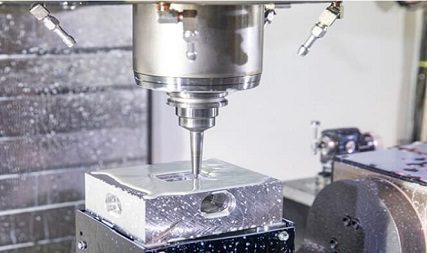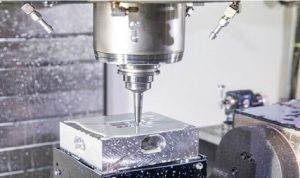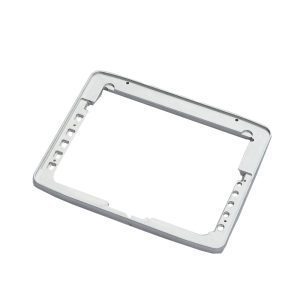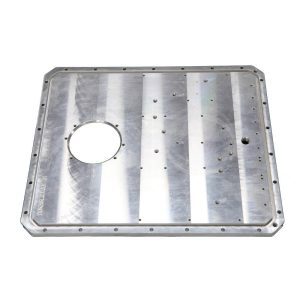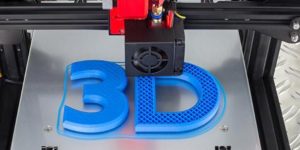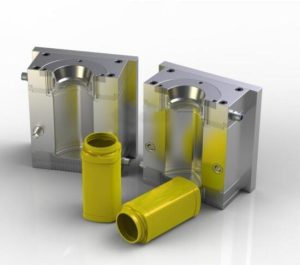What is CNC prototype machining?
Prototype CNC machining 5is a process in which different samples are produced before the product moves on to mass production or final investment. In prototype machining, the subtractive manufacturing method is preferred because it takes less time and is cost effective than additive manufacturing. The checklist for objectives of rapid prototyping includes the following:
- What a part will look like when manufactured
- Testing to see that the part will work as designed
After verifying the above parameters, the manufacturing of custom parts is initiated.
The core steps involved in rapid prototyping are listed below:
- Defining the problem
- Focusing on features
- Production method
- Testing of part
- Analyzing aesthetics
The different phases involved in the prototyping of custom parts are given as follows:
- Inception of the idea
- Creation of a CAD file
- Planning of the production sequence
- CNC programming
- Production
- Testing and refining – Iterative process
With the basics covered, let’s take a look at the advantages of CNC prototype machining.
Advantages of CNC prototype machining:
Although the use of CNC machining was started in the 20th century, the latest technology has changed its manufacturing levels by a huge margin. The introduction of different reliable software in the CNC machining niche helps to produce complex parts not only in metal but also with different material executions.
The benefits offered by CNC prototype machining are as follows:
Provides rapid prototyping service
It works with a sophisticated software solution that can help program the CNC machines with optimal tooling strategies. In line with the 3D CAD file and raw materials, the methodology of conversion to the final product is formulated thereby taking much less time than other prototyping techniques. CNC rapid prototyping is ideal for projects with a short lead time and helps the product to market quickly.
No fixed tooling
It doesn’t require the use of separate tools and cutters as used for larger projects. This helps to reduce initial investment costs and lead time for new product development. In some cases, custom tooling is even developed for custom CNC parts.
Provides high accuracy
Using CNC machine tools and modern cutters, they provide more accuracy and preciseness, reliably making parts to tolerances of +0.01mm or better. It is preferable for the prototyping of commercial applications specifically in the aerospace and medical industry where tolerancing can make the difference between night and day.
Adjustable with many materials
It can work with many different materials. Plastics, wood, and metals; this methodology greatly adapts to a variety of materials. This greatly benefits product developers who want to analyze cost, appearance, and part performance. For instance, PLA plastic is often used for presenting initial ideas for seed funding projects before the final product in metal or wood material execution is made.
Provide product uniformity with prototype
In mass production, CNC machined parts can be replicated and reproduced easily. This is not possible with traditional machining techniques. Replication and control of the output are very easy due to the accuracy of commanded endpoints fed through a standardized machine language format. This is universal for multiple machining centers and processes.
Disadvantages of CNC prototype machining
Despite its benefits, CNC prototype machining has certain limitations. Some of the disadvantages are listed below:
Maintenance cost
The maintenance cost of a CNC machine is a major disadvantage to the service provider. While it has the capability to cater to greater production volumes, it also results in higher wear-out rates. Maintenance costs are divided into different intervals, and these are classified as follows:
Daily maintenance costs (operating costs):
- Greasing of functional parts
- Empty the chip hopper at regular intervals
- Maintenance of coolant levels
Monthly maintenance includes:
- Clean cooling fans, chucks, and jaws
- Replacement of the air filter
- Detect abrupt changes in the usage of coolants
Yearly maintenance includes:
- Calibration of equipment
- Drain the lubrication unit
- Check conveyors and headstock
- Inspect chuck cylinders and hydraulic hose
Some geometrical limitations
The main disadvantage of using CNC for prototype machining is its geometrical limitations. The 4-axis and 5-axis machining centers offer flexibility, but it is not enough to cater to minute structures in scaled-down prototypes. Also, the hidden portion of geometries or inaccessible areas might be challenging to create.
Cost and Amount of waste material
CNC machining is a subtractive process. Hence, material wastage while formulating the desired prototype part is an issue.
Moreover, CNC machines are expensive and huge investment is required for new startups. The cost is one of the reasons that some manufacturers are looking for alternative techniques to implement prototype CNC machining. It is more expensive when smaller parts are machined because it requires constant human supervision, time and faces material wastage.
Training Costs
The usability of complex CNC machines is reliant on good training procedures for engineers and operators. Hands-on training sessions and experience come at a huge price to the machining service provider. With modern machinery advancing at an unprecedented pace, updating the workforce with the latest knowledge falls on the shoulders of the service provider ultimately resulting in a profit-gulping activity.
Application of CNC prototype machining
Rapid prototyping has applications in many industries. Most industries need a functional prototype or a product showing how the actual design works. Machined tooling is often preferable to maintain strength and mechanical stability, which is not offered by additive processes.
The industrial applications for prototyping are as follows:
Automotive industry
Automobile companies are coming up with innovation. They need to create prototypes before adding them to the manufacturing line. Also, they need to test these prototypes, and after final testing, the parts proceed to mass production. The use of 4 axis and 5 axis machining is widespread in this industry. Specifically, automotive lighting prototypes have been an area of great investment.
Medical Industry
The medical industry is evolving rapidly with new prosthetic parts for ease of different treatments. Since the human body is sensitive, in-depth testing of prototypes is vital for market feasibility. Medical equipment requires high precision, so CNC machining provides high-quality functional prototypes.
Aerospace industry
Every single part related to the aerospace industry is critical and must be of high quality. So, CNC machining provides a high level of accuracy. Some of the essential parts manufactured with CNC service are as follows:
- Landing gear housing
- Bushes
- Manifolds
- Airfoils
- Polymer-based strong and lightweight prototypes (thermoplastics)
Military and Defence industry
The military industry consumes a significant portion of the budget toward research and development. It involves manufacturing new weapons, bulletproof vehicles, aircraft, and their respective parts. That’s why CNC prototyping is excessively used in military R&D.
Comparison between CNC Prototype Machining and 3D Printing
CNC machining and 3D printing are the main manufacturing processes used for making different geometries. Their common point is the ability to make prototypes quickly. Both technologies have good adaptability with different materials.
The main difference between them is in the method of manufacturing. Whether it is CNC turning or CNC milling, it works on the principle of subtractive manufacturing from a billet. On the other hand, in 3D printing, the material is added layer by layer to form a desired shape or part.
There are many factors to consider when choosing the optimal manufacturing technology.
- CNC machining process is preferred for all the parts that are less versatile in nature.
- It offers greater dimensional accuracy than 3D printing.
- It usually comes with a higher price tag for smaller parts volume.
- It provides tighter tolerances and excellent repeatability even for complex machining features. Very large to small pieces are machined accurately.
- It is mainly used to produce CNC parts from sheet metal i.e. steel, aluminum, titanium, brass, copper, and stainless steel.
On the other hand, 3D printing is optimal in the following situations:
- For small volumes, 3D printing is generally cheaper than CNC machining.
- Small parts can be delivered within 24 hours.
- 3D printing is preferred when you need a small number of identical parts.
Comparison between CNC Prototype Machining and Injection Molding Prototypes
Injection molding (IM) is a manufacturing process that uses an injection molding machine (IMM). It is mainly used for plastic materials. These machines consist of the following components:
- Injection screws
- Injection barrels
- Fabricated molds
- Heater bands
Let’s take a look at a brief comparison between the CNC machining prototype and injection molding.
- Tooling costs for the CNC machining process are more reasonable than injection molding. CNC machining cost mainly depends on the fabrication of jigs and fixtures and the procurement of raw materials. In comparison, molds for injection molding can cost hundreds of dollars for multiple cavity molds.
- CNC machining is often preferred for small-volume parts. Multiple cavity molds can quickly manufacture parts in injection molding and reduce per-piece costs.
- CNC machining is capable of manufacturing parts from plastics and metals like aluminum and steel. However, thermoplastics and elastomers can easily be fabricated into parts using the injection molding technique.

